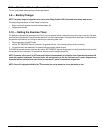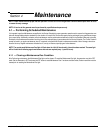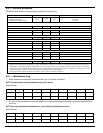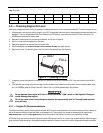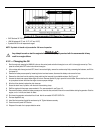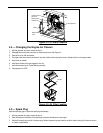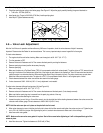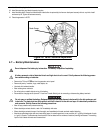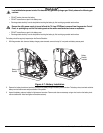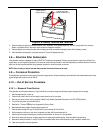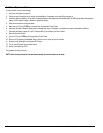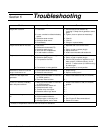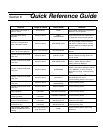
Automatic Standby Generator Owner’s Manual 23
9. Install the rubber plug into the fan screen.
10. Install the spark plug and attach the spark plug wire.
11. Install the back panel. Ensure that the alternator intake bellow is captured by the frame on back panel securely with out any kinks. Install
enclosure top lid. Tighten all fasteners securely.
12. Place the generator in AUTO.
Figure 4-6: Valve Clearance Adjustment
4.7 — Battery Maintenance
Do not dispose of the battery by incineration. The battery is capable of exploding.
A battery presents a risk of electrical shock and high short circuit current. Strictly observe the following precau-
tions when working on batteries:
• Remove the 7.5 Amp ATO® fuse from the generator control panel.
• Remove all jewelry—watches, rings, metal objects, etc.
• Use tools with insulated handles.
• Wear rubber gloves and boots.
• Do not lay tools or metallic objects on top of the battery.
• Disconnect the charging source (remove T1 fuse from Transfer Switch) prior to connecting or disconnecting battery terminals.
Do not open or mutilate the battery. Released electrolyte has been known to be harmful to the skin and eyes, and
to be toxic. The electrolyte is a dilute sulfuric acid that is harmful to the skin and eyes. It is electrically conductive
and corrosive. Strictly observe the following precautions:
• Wear full eye protection and protective clothing.
• Where electrolyte contacts the skin, wash it off immediately with water.
• Where electrolyte contacts the eyes, flush thoroughly and immediately with water and seek medical attention.
• Wash down spilled electrolyte with an aid neutralizing agent. A common practice is to use a solution of 1 lg (500 gr) bicarbonate of soda
to 1 gal (4 l) of water. The bicarbonate of soda solution is to be added until the evidence of reaction (foaming) has ceased. The resulting
liquid is to be flushed with water and the area dried.
Feeler Guage
$
+
*



